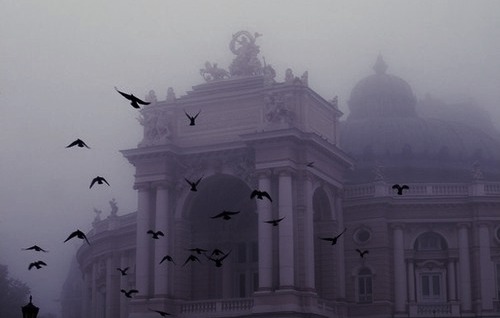Don't wanna be here? Send us removal request.
Text
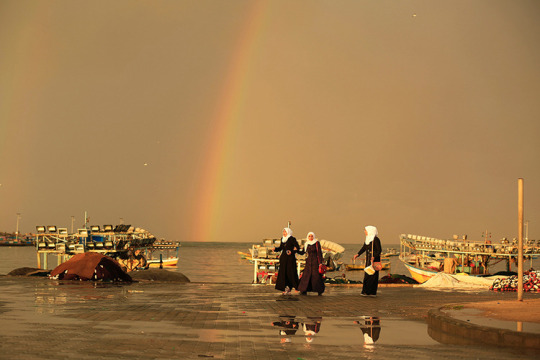
Gaza City, Palestine (2015)
Palestinian schoolgirls walk in front of a rainbow illuminating the sky over Gaza City's shore.
24K notes
·
View notes
Text

Fritz Schmenkel was the only German national who became a Hero of the Soviet Union for his actions during WWII.
Fritz Schmenkel was born in Stettin (today Szczecin, Poland) in 1916. His father, Paul Krause, a brickyard worker and communist, was murdered by Stormtroopers in 1932. This caused Fritz to join the Young Communist League of Germany to fight his father's Nazi murderers.
In December 1938, he was drafted into the Wehrmacht but refused to serve citing illness and other excuses. He was imprisoned for evading conscription. In July 1941, after the beginning of Nazi Germany's invasion of the Soviet Union, Schmenkel volunteered to fight on the Eastern Front so he was released. His true intention was always deserting which he did in November 1941. But he couldn't hide in Belarusian forests forever so there was a dilemma. How not to get killed on spot by comrades because of his German uniform and communicate without knowing Russian language? The shivering and hungry Shmenkel knocked on the doors of local village residents, using a simple set of words: "Lenin, Stalin, Thälmann" - and the doors opened. In exchange for help in a simple peasant household, Fritz received food, a place to sleep, and moved on.
One day Shmenkel came across a patrol of German military police and was arrested. Fortunately for the deserter, fighters from the partisan detachment "Death to Fascism" descended on Germans some time later. After a short but stubborn battle, the garrison was routed, and the partisans learned from local residents about the strange German. Not having time for serious investigation, the fighters simply took him with them. That's how Shmenkel ended up in the partisan detachment.
Of course, at first Soviets were very wary of Fritz, they feared that he was a Nazi spy. But they still decided not to act rashly and give him a chance. And soon such an opportunity presented itself. In one of the villages, the partisans came across German detachment. A fight ensued. Shmenkel did not take part in it - he had no weapon. Since there were too many Germans, the fate of the partisans seemed to be predetermined. Fritz asked for a rifle. Realizing that they have nothing to lose and an extra fighter was now worth its weight in gold, the detachment commander took a risk. And he was right. Shmenkel started successfully shooting at Germans. The partisans won that battle. He was then accepted as a member of the partisans. He quickly gained the respect and affection of his unit, his comrades started nicknaming him Ivan Ivanovich jokingly adding "Why call a good person Fritz?".
Schmenkel led German military units into ambushes arranged by the partisans. This helped the partisans capture entire units of Wehrmacht soldiers, as well as ammunition and food. Schmenkel quickly rose through the ranks of the partisans. In March 1943, he traveled to Moscow at the behest of the Red Army, was awarded the Order of the Red Banner, and received further military training. He was appointed deputy commander of a special operations (sabotage and intelligence) unit that operated in a German-occupied area north of the city of Orsha.
Germans put a reward on Schmenkel's head - 8 hectares of land, a house, a cow, and two thousand German marks. Later, the reward was raised to an astronomical sum for those times - 25 thousand marks.
At the end of 1943, contact with Fritz Schmenkel was lost. Only after the war did it become known that he had been captured and tortured by the Gestapo, but Fritz had not changed his views. He was sentenced to death and executed in occupied Minsk in February 1944.
His last wish was to send a letter to his wife Erna Schäfer. He wrote: "Forgive me for the troubles I have caused you by going my way to the end. I did not renounce my views even in the last hours of my life. I am boldly going to my execution because I am dying for my convictions." He left behind three children in Germany.
By the Decree of the Presidium of the Supreme Soviet of the USSR of 6 October 1964, Fritz Schmenkel was posthumously awarded the title Hero of the Soviet Union "for active participation in the partisan movement, exemplary fulfillment of command assignments during the Great Patriotic War and the heroism and courage displayed in doing so."
The memory of Fritz Schmenkel is immortalized in the names of streets in the cities of Nelidovo and Bely in the Tver region. And in Minsk, a memorial plaque is dedicated to him. One of the streets in East Berlin also bore the name of Shmenkel. However, it was renamed in 1992.
580 notes
·
View notes
Photo


Aphrodite Anadyomene, Lebanon, Baalbek. Bronze, gold, semi-precious gems
1K notes
·
View notes
Text

Ego → https://www.instagram.com/01000101_01100111_01101111/
3K notes
·
View notes
Text










I Saw the TV Glow (2024) dir. Jane Schoenbrun
11K notes
·
View notes
Text















“What transness and especially a pre-transition dysphoria actually feels like, to me at least, is much more internal and intangible. The language that I use to try to talk about it is language that I'm borrowing from the surrealism of David Lynch — the dreamlike nature of his films — or the body horror of David Cronenberg.” — JANE SCHOENBRUN, I Saw the TV Glow writer/director (x)
@lgbtqcreators creator meme (v2): [1/3] free choice
13K notes
·
View notes
Text
"I made it all the way to Phoenix on the money I had saved. The trees looked different, but everything else was exactly the same. I started using a new name. Sleeping at the cheapest hostel I could find. The Pink Opaque was over. I got a job at the mall. At Build-A-Bear, filling the dolls up with stuffing. I got out of that town. That place, I knew would kill me if I stayed. But something was still wrong. Wronger, even. Time wasn't right. It was moving too fast. And then I was nineteen. And then I was twenty. I felt like one of those dolls, asleep in the supermarket. Stuffed. And then I was twenty-one. Like chapters skipped over on a DVD. I told myself- this isn't normal. This isn't normal. This isn't how life is supposed to be."
"I thought about running away again. About moving to Santa Fe and changing my name one more time, but I knew that everywhere would just be the same. I had seen how it ended. I knew where I was. A little bit after my twenty-second birthday, I paid this burnout kid who used to hit on me in the food court fifty bucks to bury me alive. I mean, he didn't know he was burying me alive, but I doubt he would have cared too much even if he did. I bought a coffin. I dug a hole. I got inside and I closed the lid. I said to myself, this is crazy, what you're doing is crazy, but another part of me knew that it wasn't. That it was survival, and that I didn't have much time. That what felt like years in this world was actually just seconds."
"So I waited. And then finally, the first spadeful of dirt hit the top of the box. And then another. And then another. I sang songs to myself. I counted to ten thousand without skipping any numbers. I pissed and I shit my pants and I forced my mouth to produce whatever saliva it could muster just so I would have something to drink. I screamed as loud as I could for help. I apologized for the whole thing, and I begged God for someone to come along and save me. I tried and tried to claw my way out, but that burnout guy had packed the dirt in too tight- just like I had asked him to do."
"And then, after I don't know how long, I felt myself start to leave myself. And it was like I was watching myself on TV from across the room. And I was moving further and further away from the screen until the screen was so small that I couldn't even see myself anymore. And then I was clawing my way up out of the ground. And then I was at the surface, gasping for air, rain pouring down on me. Thunder and lightning. And I was finally back there. Back at our old sleepaway camp."
"And just like I was waking up from a bad dream, that whole life- that whole reality where I was Maddy Wilson- drifted away. Like a brief hallucination that, after a few moments, I could hardly even remember. And all those memories that had felt so real washed away with the rain back at our old sleepaway camp. And I was me. I was finally me again. And it was the season six premiere."
I Saw The TV Glow (2024)
75 notes
·
View notes
Text

I came across the word "swaggereth" in a book from 1622 last night and felt like it should be shared with the world.
"Hee swaggereth, as though the whole Towne were his owne."
(source: Adagia in Latine and English, Erasmus, 1622.)
9K notes
·
View notes
Text










Another selection of some of the better names I've come across in Regency era newspapers recently.
16K notes
·
View notes
Text
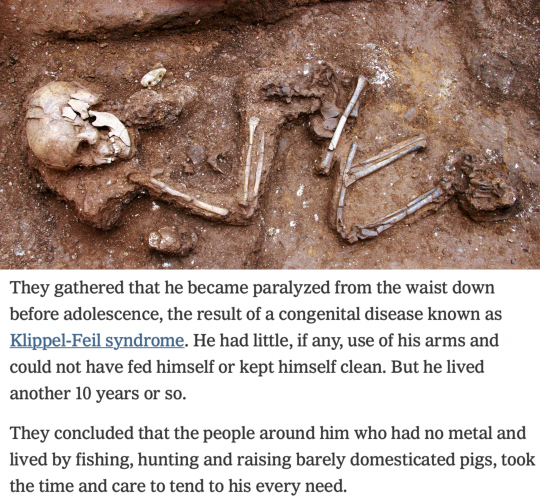
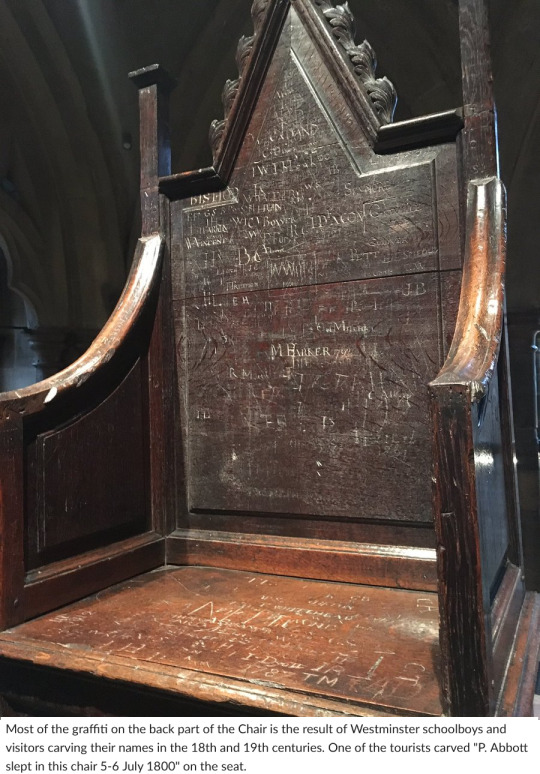
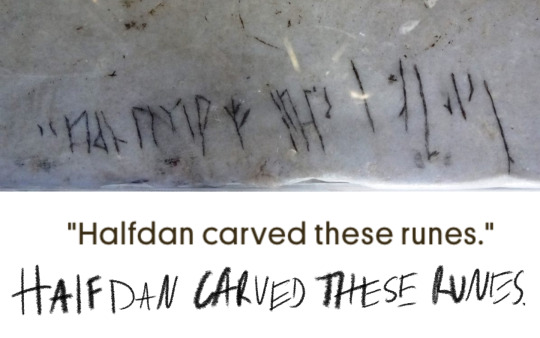
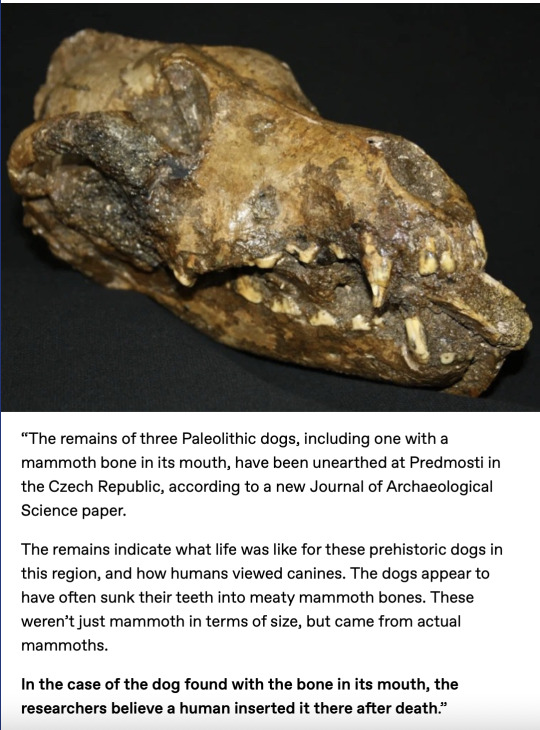




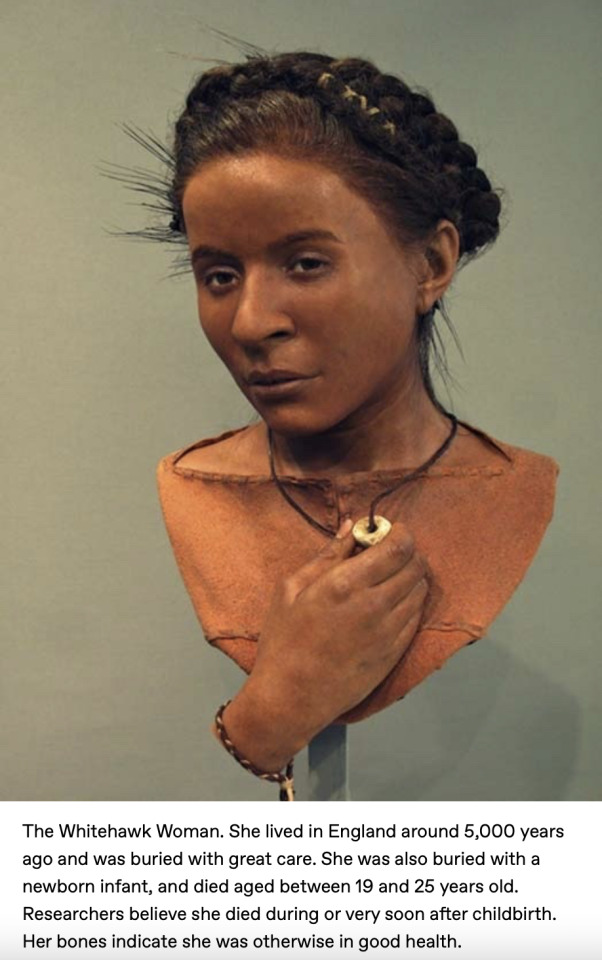
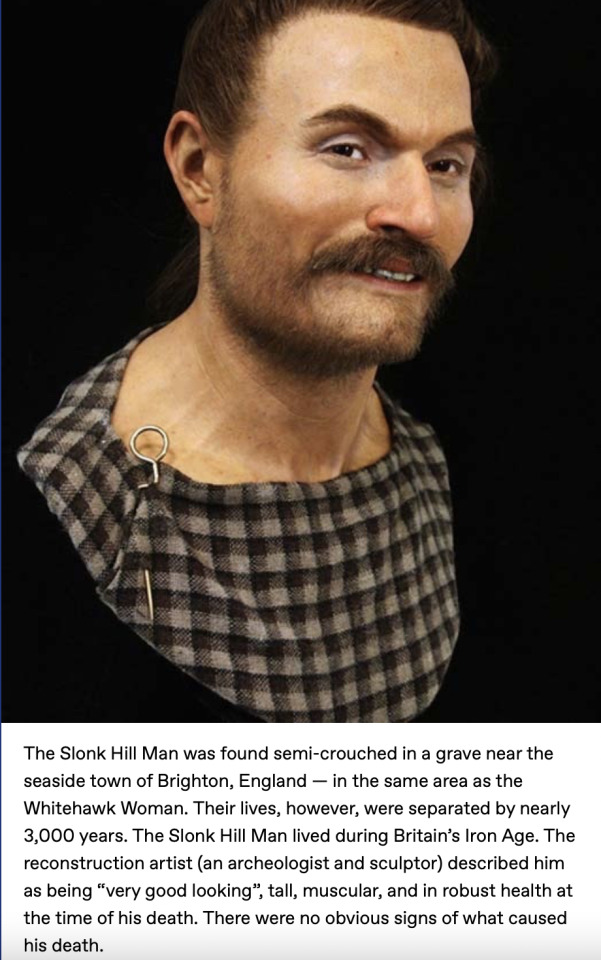

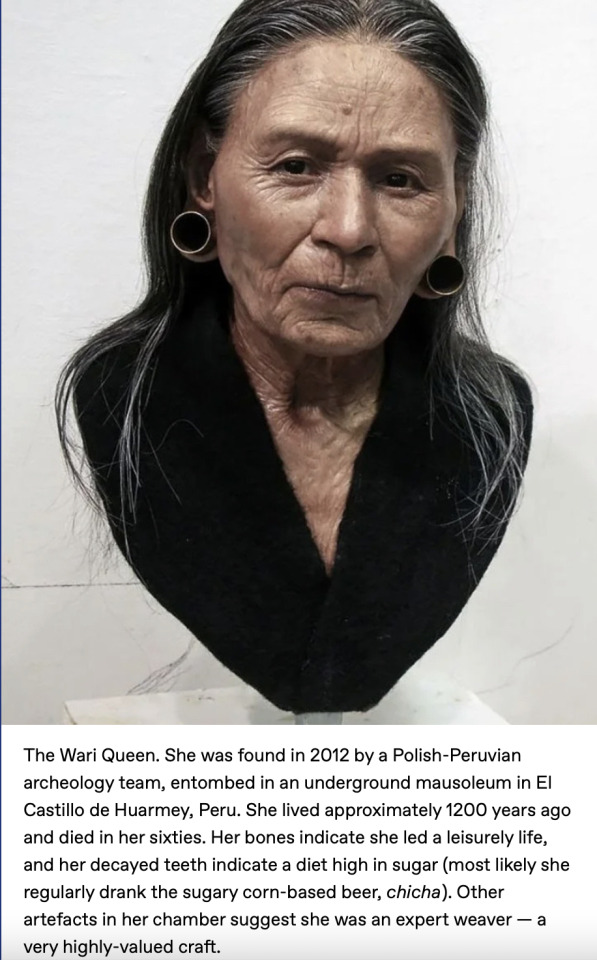













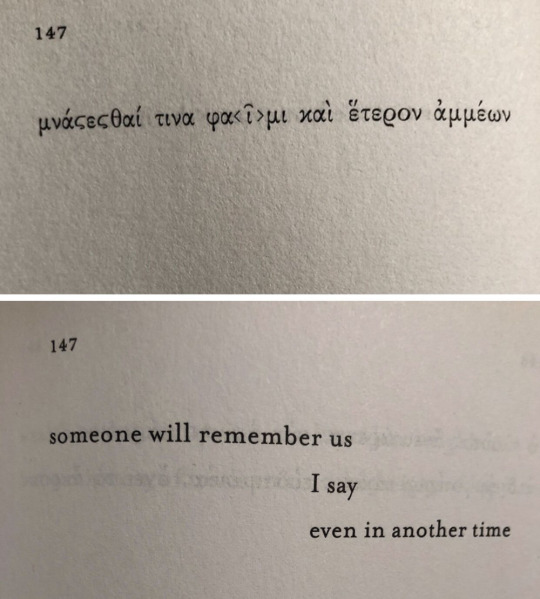
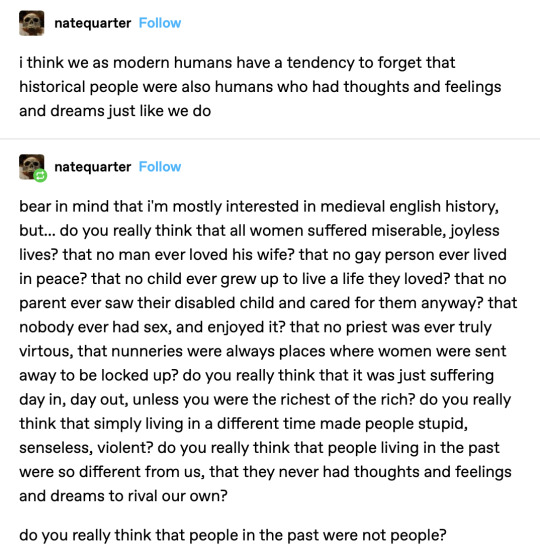
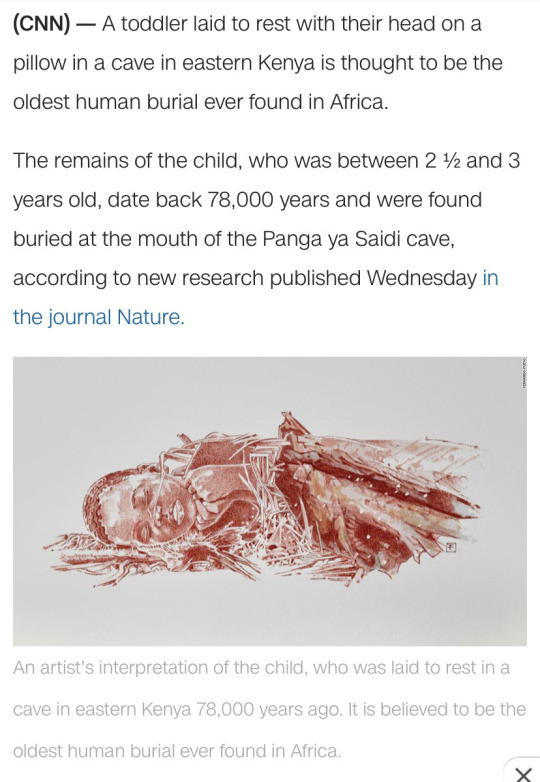
I have a folder called Time is a Flat Circle in which I collect evidence of humanity. Here is most of them.
177K notes
·
View notes
Text
Dousojin: “Wicker-man Of Japan”?
According to Wikipedia, Wicker-man was a: “… large wicker statue reportedly used by the ancient Druids (priests of Celtic paganism) for sacrifice by burning it in effigy.” Similar ritualistic practices can also be seen in Japan to this day and such idols are commonly called Dousojin [道祖神].

An 18th-century illustration of a wicker man. Engraving from “A Tour in Wales” written by Thomas Pennant.
According to “Kami-no-bunkashi-jiten” [神の文化史事典] (2013) by Taka’aki Daito [大東 敬明] (n/a) and Kazuo Matsumura [松村 一男] (1953-present), Dousojin or Saino-kami [賽の神] are idols of local deities protecting a village from evil and/or fertility that’re usually seen standing at the boundary/entrance of a community (city, town, village, and etc), but they’re now seen more as guardians of on-road safety for travelers. Dousojin idols can be spotted everywhere in Japan with Nagano and Gunma Prefecture are said to have the densest concentration of them than any other prefectures.

Dousojin idols located in Karuizawa Town [軽井沢町], Nagano Prefecture
While Dousojin idols comes in many different forms, such as a stelle/statue with its name carved on to it (like the ones in the image above), a male/female couple, or a pair of male/female genitals, most of them are made of stone. However, the Dousojin idols seen in Northeast Japan (especially in Akita Prefecture) are largely made of hays or other wooden materials instead and they also possess a vast variety of appearances. The Kashima-sama [鹿島様] type of Akita-ningyo-dousojin [秋田人形道祖神] (i.e.: a particular group of Dousojin idols from Akita Prefecture) located sporadically throughout Central to Southern mountain areas within Akita Prefecture, for example, is a doll of different sizes crafted out of straw, hay, or wood predominantly installed at village and/or sanctuary entrance.

Dousojin from Central Akita Prefecture

Dousojin from Southern Akita Prefecture
Theory on Kashima-sama origin, according to Akita Prefecture’s Online Tourist Information Center [秋田県WEB観光案内所], argues that Lord Satake [佐竹氏] (i.e: the leader of Akita Clan [秋田藩] and the ruler of past Akita Prefecture during Edo period) was either a devotee of Kashima-jinguu (shrine) [鹿島神宮] (Kashima City [鹿嶋市], Ibaraki Prefecture) or Koshio Shrine [古四王神社] (multiple locations in Northeast Japan) since both shrines enshrined Takemikazuchino-ono-kami [建御雷之男神] (i.e: one of the thunder deities in Shinto mythology) as their main deity. Based on this information and how Takemikazuchino-ono-kami is alternatively referred to as Kashimano-kami [鹿島神], Lord Satake might had some influence in naming this particular Dousojin as Kashima-sama. However, the exact reasons on how Akita-ningyo-dousojin became to be comprised of wood or hay instead of stone is still unknown. Nevertheless, some speculations can be made to why this might be the case via observing traditional rites and festivities involving Kashima-sama practiced in Akita Prefecture.

Caricature of Takemikazuchino-ono-kami riding on a giant catfish (1857) (artist n/a)
Unlike the supposed Wicker-man and its rituals conducted by primordial Celtic pagans, many cities/towns in Akita Prefecture (mainly in Daisen City [大仙市] and Yokote City [横手市]), locals holds an annual festivity called Kashima-nagashi [鹿島流し] or Kashima-okuri [鹿島送り]; celebrated from June to September depending on the location. In this festivity, every households would bring out a straw/paper doll with the name “Kashima-sama” written on it and put it on a tiny boat (formally named: “Kashima-bune” [鹿島舟]) after a shrine priest purified all the dolls then let the boat sail free out the ocean via river stream (some communities are also said to burn the straw doll instead). The belief behind this rite is to figuratively “getting rid of general evil and bad luck” from the community via the straw dolls. This form incantations and rituals practiced in many Japanese folk religions using a wooden/straw doll as a spiritual medium is specifically called Hitokata-shiro [人形代]; imported from China to Japan during the Asuka period [飛鳥時代] (538 C.E. - 710 C.E.). Consequentially, this might be the reason why Akita-ningyo-dousojin (including Kashima-sama dolls) are comprised of wooden materials, so that they may be able to float on water or to be incinerated.
(n.b.: Kashima-nagashi/Kashima-okuri is a festivity celebrated throughout Northeastern Japan and not exclusively in Akita Prefecture only)

Kashima-bune from Kashima-nagashi in Daisen City
Furthermore, in a manner of confirming the theoretical relation between Takemikazuchino-ono-kami and Kashima-sama noted previously, some places such as Kita-ura [北浦] of Oga City [男鹿市] and Araya [新屋] of Akita City [秋田市] (both in the same prefecture) were said to celebrate Kashima-nagashi/Kashima-okuri simultaneously with Kashima Festival [鹿島祭り] (July 14th in Kita-ura and June 9th in Araya); a Shinto festivity involving singing and dancing known as Kashima-odori [鹿島踊り] which originated from Kashima-jinguu (shrine) that also spread to Kanagawa and Shizuoka Prefecture as well as to other prefectures/regions later on (via: “Saishi-shūzoku-jiten (New Edition)” [祭祀習俗事典] (2018) by Kunio Yanagita [柳田 国男] (1875 - 1962)).

Kashima-odori at Kashima-jinguu (shrine) (video)
Although the historical origins of Dousojin are yet to be verified, they’re some of the most diverse deities in Japanese folk religion not only in terms of appearances, but in their uniquely independent legends and representations as well. Thus some of them (like the Akita-ningyo-dousojin type), reminds me of modern Wicker-mans and their recreational festivities which I heard of from my European friends. Such as this one bellow:

Wickerman Event 2013 in Wola Sękowa, Poland
43 notes
·
View notes
Text
I CONTINUE TO BE TITS DEEP IN DEMONOLOGY RESEARCH:
IF YOU ARE A NOBLE THAT RUNS A COUNTY YOU ARE A COUNT OR A COUNTESS
NOW IF YOUR COUNTY IS ON THE BORDERS OF THE REALM YOU MIGHT HAVE TO DEAL WITH WAR SO YOULL HAVE SOLDIERS MARCHING THROUGH YOUR COUNTY SO MUCH IT BECOMES A MARCH AKA A MARK AND YOU GET UPGRADED TO BEING A MARQUIS
SIMPLY PUT A MARQUIS IS A COUNT THAT OWNS A BORDER TERRITORY
HELL HAS SEVERAL MARQUIS
WHICH MEANS HELL HAS BORDER TERRITORIES
MY QUESTION IS WHO TF IS INVADING HELL
24K notes
·
View notes



